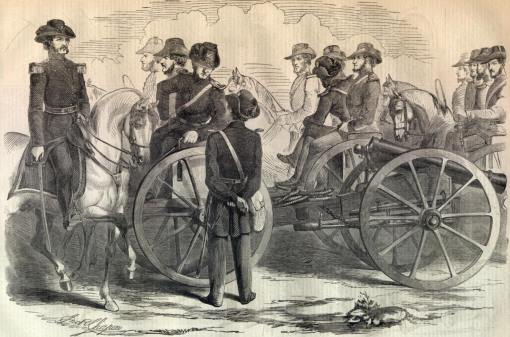I made my first post on Bull Runnings on November 2, 2006. It’s been a fun two years, and I’m hoping for a few more (at least), the Good Lord willing and the creeks don’t rise. By way of a recap on the digital history part of this site, I’ve posted all of the Official Reports (After Action Reports) for Bull Run proper, at least all of those included in the Official Records; citations for all Bull Run MOH awardees; Orders of Battle for both armies; a few biographical sketches; links to beau coup digital books; one previously unpublished contemporary letter from a prominent participant; transcripts of one witness’ testimony before the Joint Committee on the Conduct of the War; and three photo galleries. Lots of miles to go yet.
Bull Runnings has been featured in one print magazine, and I was interviewed for an Internet Civil War radio program. One series of posts was included in the 14th Military History Carnival.
Bull Runnings remains ad free.
Blog stats. I’ve written 463 posts in 36 different categories, and received 940 comments (a useless stat since it includes links between articles). I’ve also received (and blocked thanks to Akismet) 10,798 spam comments. At the suggestions of Craig and Robert, I’ve started using something called “Tags”. I don’t understand the difference between tags and categories, but I’ve created 25 of the former in the past couple of days. I haven’t decided yet if I’ll go back and tag every old post, but may do so as I revisit them for whatever reason.
As of right now, my pages have been viewed 72,551 times. For the 2 months I was up in 2006, I averaged 63 pageviews per day; 73/day for all of 2007; and 137/day so far in 2008. Right around 90 different computers visit Bull Runnings each day.
Not very impressive numbers, I realize. But I’m OK with it if you are. I know of a few sure-fire ways to increase traffic, but writing about such things would violate the few very simple rules I established when I first set out, and I’m not willing to make that sacrifice.
Thanks to each and every one of you who read my stuff – even you who come here via Google searches for striated glutes. Thanks to you who have provided great information that has helped make the Bull Run Resources on this site a meaningful tool. Thanks to all my fellow bloggers who have been so helpful over these past two years. And last, thanks to my wife and son who have had to ask distracted dad the same questions or give him the same instructions repeatedly while he taps away on this keyboard.


Recent Comments